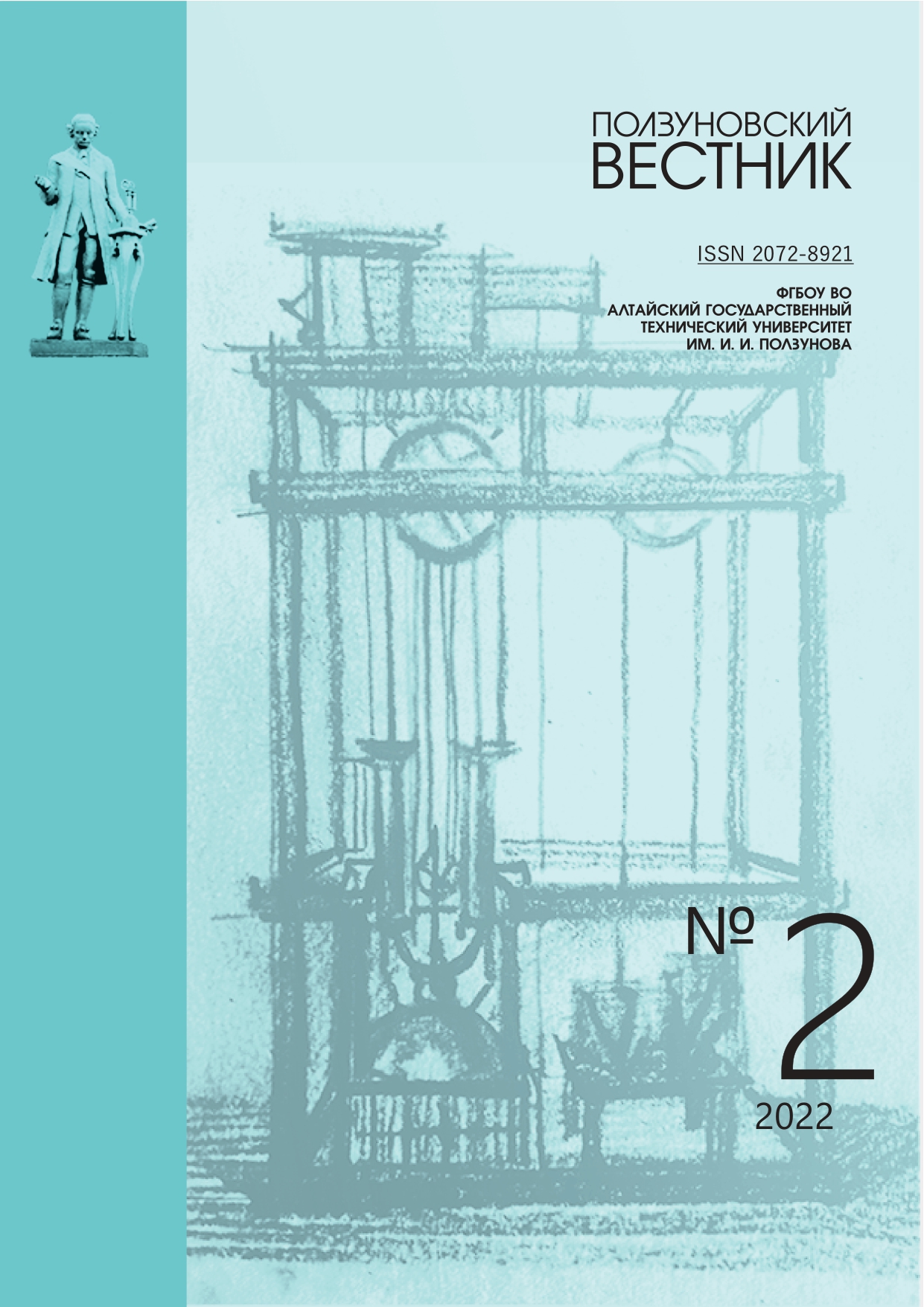ABSORPTION GAS PURIFICATION OF PRODUCTION BOILER ROOMS FOR REDUCING ANTHROPOGENIC LOAD ON THE ATMOSPHERE
EDN: KUDRVP
DOI:
https://doi.org/10.25712/ASTU.2072-8921.2022.02.016Keywords:
процесс абсорбционной очистки газов, дымовые газы, техногенный источник, диоксид углерода, регенерация сорбента, утилизация диоксида углерода, химическая абсорбция, хемосорбент, метилдиэтаноламин, энергозатраты, углеродная нейтральность.Abstract
Reducing the impact of emissions of pollutants, including carbon dioxide, formed during the combustion of fossil fuels, can be carried out with the use of technologies of capture, disposal and burial. The absorption of CO2 after combustion is mainly used in operating boiler units – sources of emissions, where various solvent -absorbers are used for the chemisorption of carbon dioxide.
The urgency of solving the problem of carbon dioxide capture from natural gas combustion products of industrial boilers is shown. A method of carbon dioxide capture by chemical absorption using solutions of methyldiethanolamine (MDEA) is proposed on the example of a production boiler house of JSC Altayvagon. Flue gases containing CO2 are supplied to the carbon dioxide workshop of the enterprise for cleaning, followed by the utilization of carbon dioxide, which is used at Altaivagon JSC for welding operations. The proposed chemosorbent MDEA of domestic production in comparison with the imported analogue currently used at the enterprise has certain advantages, which will reduce the circulation of the absorbent solution, use the chemosorbent more fully, reduce energy consumption; due to the low corrosion activity of the absorbent used and the absence of tar formation, the costs of maintenance and repair of equipment will decrease. Due to the use of domestic MDEA instead of imported analogues, as well as due to a longer service life of the absorbent without reducing its characteristics and adding fresh absorbent during operation, significant savings on the purchase of the absorbent will occur.
Capturing emissions of pollutants from flue gases will solve the issues of both resource conservation and reduction of anthropogenic load on the environment. In addition, carbon dioxide capture will contribute to achieving carbon neutrality of the enterprise.
References
CCUS: монетизация выбросов СО2 / С. Клубков, К. Емельянов, Н. Зотов. VYGON Cunsulting. Август, 2021.
Ахметова В.Р., Смирнов О.В. Улавливание и хранение диоксида углерода – проблемы и перспективы // Башкирский химический журнал. 2020. Т. 27. № 3. С. 103‒115.
Maddali V., Tularam G.A., Glynn P. Economic and Time-Sensitive Issues Surrounding CCS : A Policy Analysis // Environmental Science and Technology. Т. 49. Вып. 15. P. 8959–8968. 4 August 2015.
Songolzadeh M., Soleimani M.,. Takht Ravanchi M., Songolzadeh R. Carbon dioxide separation from flue gases : A technological review emphasizing reduction in greenhouse gas emissions // The Scientific World Journal. Т. 2014. 2014.
Hongqun Yang, Zhenghe Xu, Maohong Fan, Rajender, Gupta Rachid, B. Slimane, Alan E. Bland, Ian Wright. Progress in carbon dioxide separation and capture : A review // Journal of Environmental Sciences. V. 20. Issue 1. 2008. P. 14–27.
Abass A. Olajire. CO2 capture and separation technologies for end-of-pipe applications – A review // Energy. V. 35. Issue 6. June 2010. P. 2610–2628.
N. Dave, T. Do, G. Puxty, R. Rowland, P.H.M. Feron, M.I. Attalla. CO2 capture by aqueous amines and aqueous ammonia – A Comparison // Energy Procedia. V. 1. Issue 1. February 2009. P. 949–954.
Кормина Л.А., Зайцева Д.С. Решение проблемы снижения углеродного следа на АО «Алтай-вагон» // Материалы Всероссийской научно-практической конференции «Современные направления технологического развития и повышения эффективности промышленного производства в экономике Алтайского края». Барнаул, АлтГТУ. 2021. С. 96–99.
Семенова Т.А., Лейтес И.Л. Очистка технологических газов ; Изд. 2-е, пер. и доп. М. : Химия, 1977. 487 с.
Лаврентьев И.А. Анализ применения новых сорбентов в процессах абсорбционной очистки технических и природных газов от сероводорода и углекислого газа. [Электрон. текстовые дан.]. Режим доступа : http://sintez-oka.com. свободный. Доклад на семинаре в ОАО «Гипрогазоочистка» 21‒23 мая 2001 года.
Щукин Н.Ю., Матросов Н.П. Новые абсорбенты в очистке от СО2 // Химическая промышленность. 2005. № 9. С. 32‒52.
Лейтес И.Л., Громотков В.Н. Модернизация от-деления абсорбционной очистки агрегата АМ-70 ОАО «Невинномысский Азот» с заменой МЭА-раствора абсор-бентом на основе МДЭА отечественного производства // Химическая промышленность. 2002. № 1. С. 24–47
Downloads
Published
How to Cite
Issue
Section
License
Copyright (c) 2022 Lyudmila A. Kormina, Daria S. Zaitseva

This work is licensed under a Creative Commons Attribution 4.0 International License.















 .
. This work is licensed under a
This work is licensed under a 
